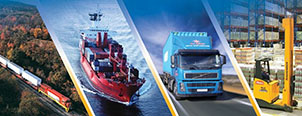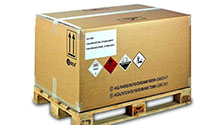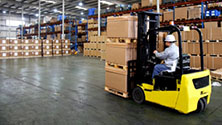Transport and warehouse logistics for dangerous goods


Transport and warehouse logistics combines the processes of storage, transportation and warehousing. It plays an important role in modern business, ensuring efficient transportation and reliable storage of goods (cargo). Thanks to logistics solutions, companies can reduce transportation costs and reduce the risk of loss or damage to goods (cargo). An important aspect of logistics is warehouse management. Warehouse logistics allows you to effectively organize the processes of storage and shipment of goods (cargo). Modern warehouses are equipped with special equipment, including software, which ensures high accuracy and speed of task execution.
The most important component of transport and warehouse logistics is the transportation of goods (cargo) using various types of transport (sea, inland waterway, road, rail, air).
One of the key tasks of warehouse logistics is to ensure an efficient and safe system for storing goods (cargo).
Logistics includes all processes related to the management of transport, warehouses and transportation. This is a complex and responsible activity that requires high organizational and managerial competence.
A special role belongs to transport and warehouse logistics used in the turnover of dangerous goods. Here, in addition to general points that must be taken into account when optimizing the processes of transportation, handling and storage, special properties and characteristics of dangerous goods are manifested. In addition, a significant volume of these goods can be high-consequence goods – goods that can be used by criminals for terrorist purposes. Therefore, the course "Transport and warehouse logistics applicable to dangerous goods" includes 2 modules: module 1 "Transportation of dangerous goods" and module 2 "Handling and storage of dangerous goods". Within the framework of module 1, students study the basic provisions of international and national regulatory documents governing the transportation of dangerous goods by various modes of transport, classification, rules for packaging dangerous goods and their marking and other important issues. When studying the materials included in module 2, the basics of warehouse logistics, types of logistics activities, planning of warehouse areas, requirements for transport and warehouse documentation, the procedure for placing goods in cargo transport units, calculating the throughput of the warehouse and many other issues are considered.
Students who successfully complete the training have the competencies obtained during lectures and practical classes, which allow them to successfully perform transport and logistics tasks, including those related to dangerous goods.
Upon personal applications, graduates of the courses are presented for certification in the International Dangerous Goods and Containers Association (IDGCA NP) as Dangerous Gods Safety Advisers, thus, in addition to certificates of professional development, they receive certificates of Dangerous Goods Safety Adviser with a validity of 5 years.





